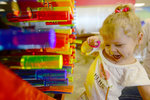
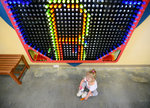
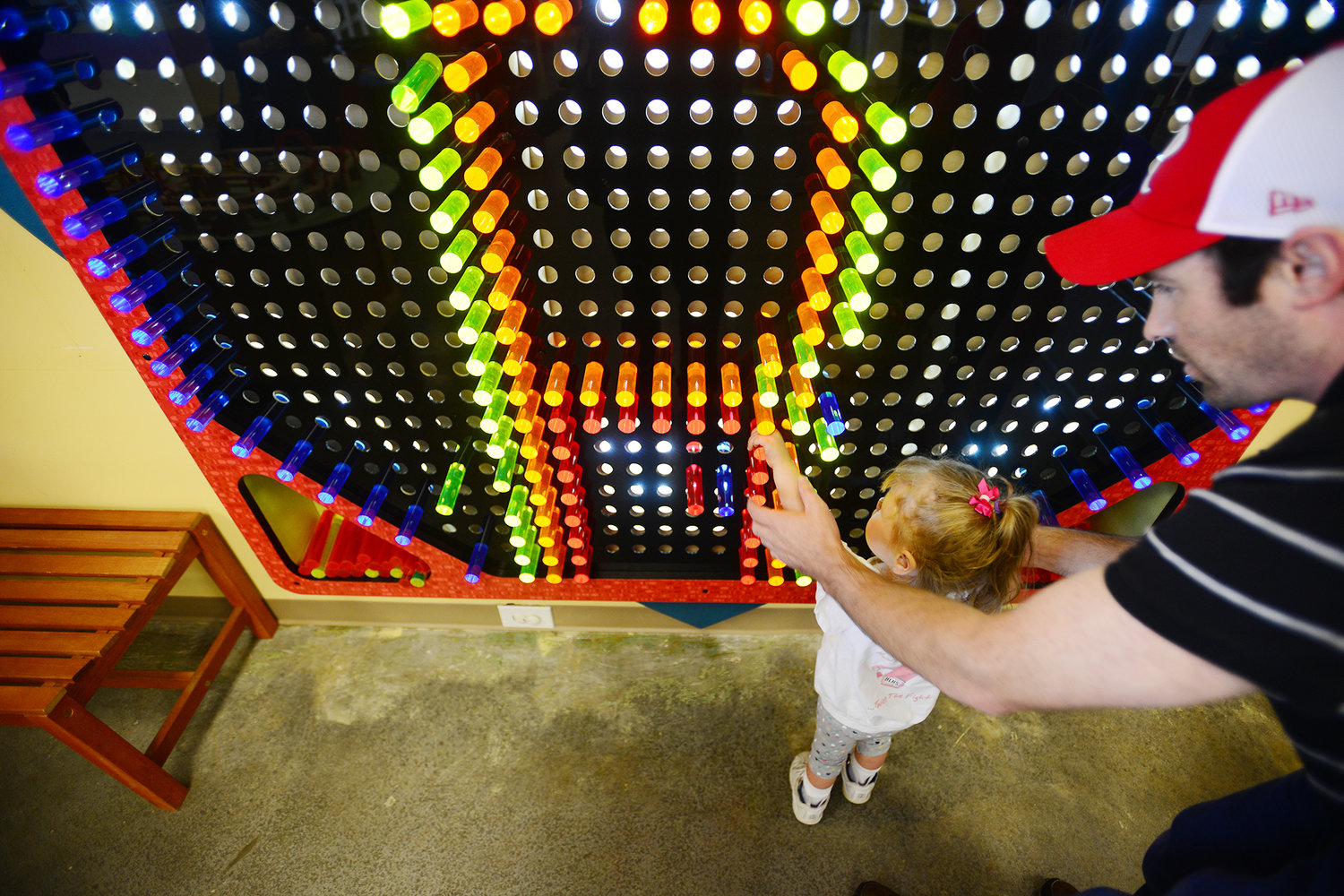
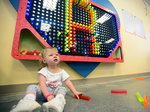
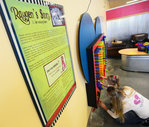
Raygen Due’s heart — or at least a glowing, Valentine’s Day heart shaped version of her heart — can be displayed for all to see.
Revealed Wednesday, Oct. 9, Raygen’s Lite-Brite wall is a fun, interactive exhibit and one that her parents, Randy and Erin Due, hope will help raise awareness.
As the results of a congenital heart defect known as Hypoplastic Left Heart Syndrome, Raygen was born with half a heart and has struggled to survive through the first two years of her life.
Erin, Randy and sister, Zoie, also have struggled.
“Being in a small county it can be an overwhelming and lonely place. It can be very overwhelming when you’re told your child will be born with half a heart and you have two options: three surgeries or your baby will pass away within days,” Erin, of Onalaska, said. “But HLHS is not a death sentence anymore. Raygen and all heart babies are amazing and what they have to go through to live is a journey.”
Through Raygen’s exhibit at the Discover! Children’s Museum, Erin hopes to share both the struggle and the joy that families of “heart babies” experience.
“Kids can go in and play with the wall, and parents can look at some of the facts we are going to list on the wall. I just thought it was one way to get information out — a children’s museum is a great place to communicate with kids and parents,” Erin said. “Plus, the Museum is still getting started, so it seemed like a good way to give them some attention. I feel like, why not?”
Though the wall was created, in part, to express Raygen’s interests — she’s fascinated by light, Erin said — it also is meant to appeal to all children, particularly those with disabilities.
“We haven’t got Raygen’s MRI done yet, so we’re not sure if her delays in development are due to surgeries, being on BiPAP, taking narcotics for so long, or some other sort of disability, but with Raygen, her play is different than a normal child,” Erin said. “She likes things that are very simple and not too flashy and noisy. She likes certain TV shows, books, the mobile in her room — she’s fascinated with flashlights.
“The Lite-Brite wall isn’t flashy,” Erin said. “It’s entertainment through interaction.”
Allyn Roe, vice chair of the museum’s board, was the mastermind behind its creation.
Roe created the colorful, heart-shaped exhibit using backlit plexiglass punched with holes.
Each of the holes is in a small “cubby” and children can put acrylic rods into the holes.
“It’s basically a small Lite-Brite toy that we just blew up,” Roe said.
The new exhibit fits well with the museum’s mission, according to the vice chair.
“It’s learning through play,” Roe said. “Though kids don’t learn directly from it, it can be a focus-guided activity. The child can work with a parent or guardian on counting the pegs or making designs or various other activities.”
Congenital heart defects are more common than you might think.
According to the March of Dimes, about one out of every 100 babies is born with a congenital heart defect, the leading birth defect in the United States, and the number one cause of birth defect related death.
This year, approximately 4,000 babies will not live to see their first birthday because of heart defects.
Early detection is essential.
Almost all congenital heart defects can be effectively detected through newborn screening using pulse oximetry, a non-invasive procedure used to measure a child’s oxygen level.
According to the March of Dimes, the earlier a heart defect is detected and treated, the more likely it is that the affected child will survive and have fewer long term health complications.
“Each year, thousands of babies are going home from the hospital – seemingly healthy,” the advocacy group One in One Hundred wrote on its website. “We know that the costs (human and financial) of delayed diagnosis are extreme – with infants presenting in the emergency room in shock or in heart failure – often resulting in neurological impairment, developmental delays, feeding issues, organ failure, highly invasive procedures and potentially death.”